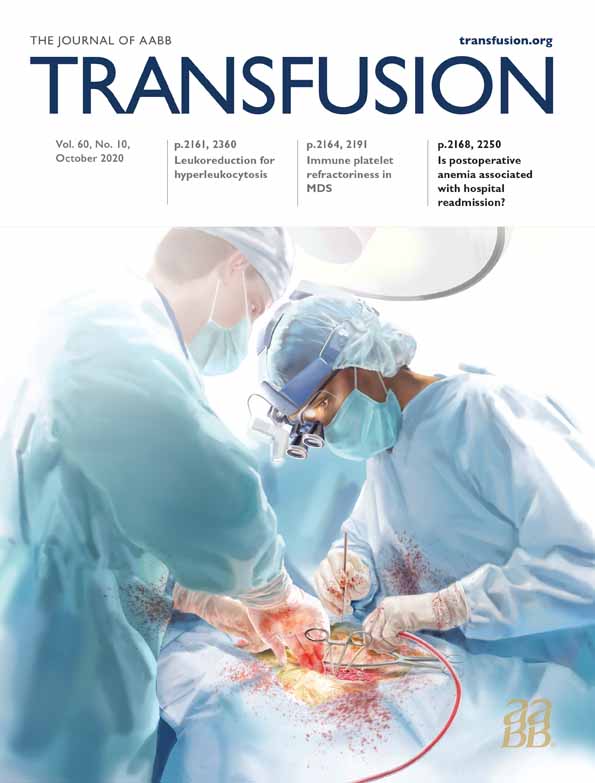Red blood cell and platelet transfusion support in the first 30 and 100 days after allogeneic hematopoietic cell transplant
Abstract
Background
Allogeneic hematopoietic stem cell transplant (allo-HSCT) recipients often require substantial but variable transfusion support.
Study Design and Methods
This single-center, retrospective study evaluated the red blood cell (RBC) and platelet (PLT) transfusion data of first-time allo-HSCT recipients transplanted in 2011 to 2017. Multivariate analyses were performed to assess the associations between patient and transplant-related factors and transfusion requirements.
Results
The study included 1762 patients who received peripheral blood stem cells (88.2%), marrow (7.0%), or umbilical cord (4.8%) from matched related (38.3%), unrelated (49.2%), or haploidentical (7.8%) donors. Almost all patients required RBCs (88.3%) or PLTs (97.4%) during the first 30 days, with medians of 3 (range, 1-37) RBC and 6 (range, 1-144) PLT units transfused. Fewer patients required RBC (43.8%) or PLT (27.3%) transfusions during Days 31 to 100, but the median (range) numbers of RBC and PLT units remained high at 3 (1-36) and 6 (1-116) among transfused patients. RBC and PLT transfusion independence was reached in medians of 24 (95% confidence interval [CI], 22-26) and 12 (95% CI, 11-12) days, respectively. Haploidentical donor, cord graft, and requiring RBC transfusions in the 10 days before HSCT were the most significant independent factors predictive of increased transfusion requirements. Advanced disease, diagnosis, ABO incompatibility, conditioning intensity, CD34+ cell dose, presence of severe acute graft-vs-host disease, and changes in recommended transfusion triggers were also shown to independently impact transfusion requirements.
Conclusions
This study provided for the first time quantitative and comparative transfusion data on a large contemporary cohort of HSCT recipients, including haploidentical and cord graft recipients, and identified factors predictive of increased transfusions.
CONFLICT OF INTEREST
The authors declare no potential conflict of interest.




